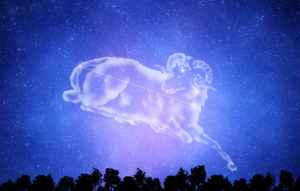Astrological Traditions
The majority of astrological traditions is founded on the movements and relative positions of celestial bodies and also the construction of calculated or perceived celestial patterns regarding the location and duration of an event.
A reference frame for the positions of astrological planets, stars, lunar nodes and so on is defined through the sidereal, or tropical zodiac containing twelve signs, plus the Midheaven in Aquarius. Twelve astrological houses define the neighborhood frame and astrological aspects determine the angular or geometric relationship between your celestial bodies and the angles contained in the horoscope.

In Western tradition, predictive astrology uses two main methods, namely astrological transits and progressions. In astrological transit, value of planet's movements through space and horoscope is interpreted. In astrologigal progression, the horoscope is moved forward in time prior to set methods.
Before, celestial objects were closely observed as well as their movements charted. Modern astrologers transform data which is provided by astronomers into groups of tables, the ephemerides. These show changing positions of celestial bodies within the zodiac with time.
Many traditions share features which are similar, as a result of passing on of numerous beliefs and dctrines between carying cultures. Others, having developed isolated, may share a number of the features but you are based on very different doctrines. As a rule, modern astrologers tend to follow Chinese, Hindu or Western tradition, or a combination of some or these.
In the 20th Century, contact between traditions has become easier, and therefore closer and a few have taken advantage of this by permitting Western astrology to diversify in several ways. Among some, much of recent tradition has made way for other approaches, just like an approach from the psychological angle, or perhaps a greater emphasis placed on midpoints. Others may now include point- or star based as well as constellational astrology. Throughout history, many changes and developments have taken place, and many traditions are no longer used. However, a number of of them, specifically Babylonian, Arab, Persian, Egyptian, Hellenistic (Classical antiquity), Hindu and Mayan astrologies, continue to be regarded as an issue of interest as well as important, useful resources by a lot of.
Today, most Westen astrologers often focus on general developments and trends, rather than forecasting actual events. They might use their skills to assist and advise a person by giving an understanding into a particular situation, the individual/ s involved and the general direction where the situation is heading. Personal birth charts give an understanding into a person's likely characteristics and best possible matches both in career choice and relationships.
Although it has never been scientifically proven, it has been used and valued as a good tool for guidance throughout many cultures using one of millions of individuals for many thousands of years. Changes and new developments might have ocurred as time passes, as is the situation with all things, but it is still as useful and reliable a source of information and insight as it was a thousand years ago.
A reference frame for the positions of astrological planets, stars, lunar nodes and so on is defined through the sidereal, or tropical zodiac containing twelve signs, plus the Midheaven in Aquarius. Twelve astrological houses define the neighborhood frame and astrological aspects determine the angular or geometric relationship between your celestial bodies and the angles contained in the horoscope.

In Western tradition, predictive astrology uses two main methods, namely astrological transits and progressions. In astrological transit, value of planet's movements through space and horoscope is interpreted. In astrologigal progression, the horoscope is moved forward in time prior to set methods.
Before, celestial objects were closely observed as well as their movements charted. Modern astrologers transform data which is provided by astronomers into groups of tables, the ephemerides. These show changing positions of celestial bodies within the zodiac with time.
Many traditions share features which are similar, as a result of passing on of numerous beliefs and dctrines between carying cultures. Others, having developed isolated, may share a number of the features but you are based on very different doctrines. As a rule, modern astrologers tend to follow Chinese, Hindu or Western tradition, or a combination of some or these.
In the 20th Century, contact between traditions has become easier, and therefore closer and a few have taken advantage of this by permitting Western astrology to diversify in several ways. Among some, much of recent tradition has made way for other approaches, just like an approach from the psychological angle, or perhaps a greater emphasis placed on midpoints. Others may now include point- or star based as well as constellational astrology. Throughout history, many changes and developments have taken place, and many traditions are no longer used. However, a number of of them, specifically Babylonian, Arab, Persian, Egyptian, Hellenistic (Classical antiquity), Hindu and Mayan astrologies, continue to be regarded as an issue of interest as well as important, useful resources by a lot of.
Today, most Westen astrologers often focus on general developments and trends, rather than forecasting actual events. They might use their skills to assist and advise a person by giving an understanding into a particular situation, the individual/ s involved and the general direction where the situation is heading. Personal birth charts give an understanding into a person's likely characteristics and best possible matches both in career choice and relationships.
Although it has never been scientifically proven, it has been used and valued as a good tool for guidance throughout many cultures using one of millions of individuals for many thousands of years. Changes and new developments might have ocurred as time passes, as is the situation with all things, but it is still as useful and reliable a source of information and insight as it was a thousand years ago.